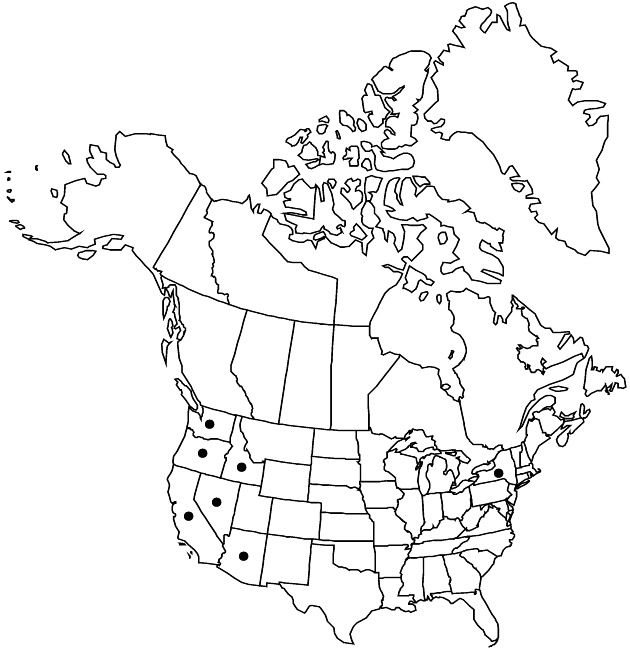familyAsteraceae
genusCentromadia
speciesCentromadia pungens
subspeciesCentromadia pungens subsp. pungens
Centromadia pungens subsp. pungens
Common names: Common spikeweed
Illustrated
Synonyms: Centromadia maritima Greene Centromadia pungens subsp. maritima (D. D. Keck) B. G. Baldwin Centromadia pungens subsp. septentrionalis (Greene) D. D. Keck Hemizonia pungens subsp. maritima D. D. Keck Hemizonia pungens subsp. septentrionalis Hemizonia pungens var. septentrionalis (D. D. Keck) Cronquist
Treatment appears in FNA Volume 21. Treatment on page 277.
Leaves: margins sometimes ciliate, faces glabrous, scabrous, or hirsute, midribs sometimes bristly. Paleae often exserted, apices ± attenuate, spine-tipped. 2n = 18, 20.
Phenology: Flowering Apr–Nov.
Habitat: Open, ± alkaline flats, depressions, waterway banks and beds, in grasslands, saltbush scrub, disturbed sites (e.g., fallow fields)
Elevation: 0–1200(–1800) m
Distribution

Ariz., Calif., Idaho, Nev., N.Y., Oreg., Wash., Mexico (Baja California)
Discussion
Subspecies pungens is circumscribed broadly to include subsp. maritima and subsp. septentrionalis based on morphologic and molecular data (B. G. Baldwin, unpubl.). As treated here, Centromadia pungens subsp. pungens occurs widely in central and northern California, and it is putatively introduced in southwestern California and outside the state.
Selected References
None.
Lower Taxa
None.
... more about "Centromadia pungens subsp. pungens"
introrse +
connate +
spine-tipped +
herbaceous +
attenuate +
scarious +
absent +
hirsute +
papillate +
continuous +
decurrent +
linear to linear-elliptic +
oblanceolate +
winged;ribbed;winged;ribbed +
1;15 +
stigmatic +
absent +
Common spikeweed +
zygomorphic +
yellow +
monomorphic +
dimorphic +
staminate +
absent +
staminate +
straight +
distinct +
proximal +
1;5 +
bisexual +
dispersed +
singly +
Open, ± alkaline flats, depressions, waterway banks and beds, in grasslands, saltbush scrub, disturbed sites (e.g., fallow fields) +
discoid +
singly +
indeterminate +
surrounding +
urceolate;obconic +
cauline +
deltate +
bristly +
2-carpellate +
inferior +
attached +
anatropous +
exserted +
persistent +
falling +
absent +
tough +
thick +
absent +
connate +
persistent +
distinct +
falling +
absent +
unequal +
1-2-pinnatifid +
sessile +
Man. Bot. San Francisco, +
1894 +
pistillate +
absent +
fertile +
compressed +
paleate +
setulose +
flat;convex +
fibrous +
exalbuminous +
modifed +
Illustrated +
alternate +
2-branched +
papillate +
absent +
Centromadia pungens subsp. pungens +
Centromadia pungens +
subspecies +
cylindric +
equaling +
shorter +
annual +